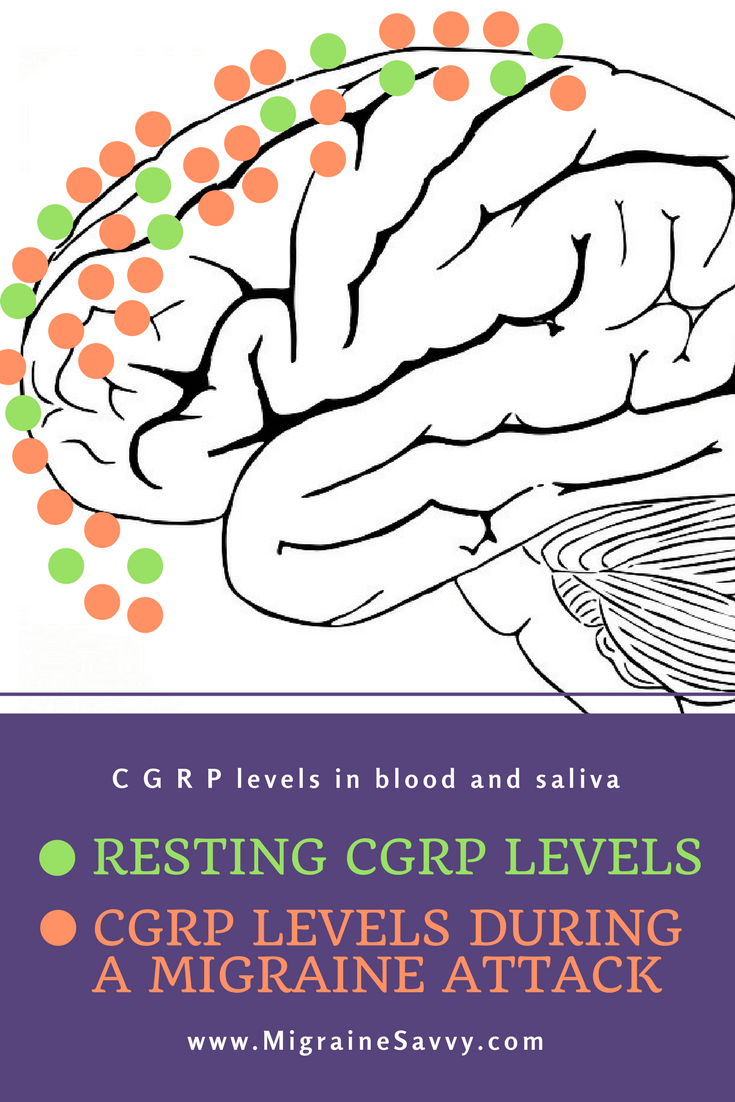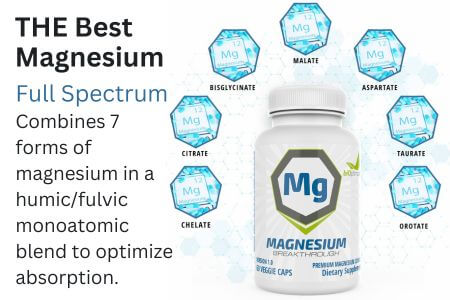- Home
- Medications
- CGRP Drugs for Migraines
COMPLETE MAGNESIUM SUPPORT
My Top Choice - Magnesium Breakthrough - The ONLY supplement with all 7 essential magnesium types in one formula. Most only have 1-2 types, leaving you deficient.
CGRP Drugs for Migraine
CGRP drugs for migraine embody a really important and exciting step forward in the treatment of this chronic condition.
Why?
Because it’s the first time a medication has been developed and trialed specifically for the treatment of migraines since the triptans in the 90's. Yup... it's been that long!
AND it’s not something that’s come about as a 'happy coincidence' while scientists were working elsewhere on treating some other condition!
If you’ve looked around my site a little or read my e-book or enrolled in my Migraine Pain Management course, you’ll know that I often say that migraineurs have more treatment options available to them now than ever before. Continued research is developing medical and scientific understanding of migraines, why they occur and how best to treat them.
And if scientists are now working on developing medication specifically for migraines, who knows what else the future will hold for us!
While CGRP drugs for migraine don’t represent a cure, trials have so far shown extremely positive results.
THE GREAT NEWS
These four CGRP inhibitors that are monoclonal antibodies were approved: [1]
- Aimovig (erenumab-aooe): Approved May 17, 2018
- Ajovy (fremanezumab): Approved Sept 14, 2018
- Emgality (galcanezumab-gnlm): Approved Sept 27, 2018
- Vyepti (eptinezumab-jjmr): Approved February 21, 2020. Eptinezumab is the first quarterly, anti-CGRP infusion therapy for migraine prevention.
And one gepant (an acute medication that works by blocking CGRP):
- Ubrelvy (ubrogepant) was approved by the FDA in December 2019
My #1 Choice in Magnesium Supplements
So what are CGRP drugs for migraine?
There are two types of CGRP inhibitors – monoclonal antibodies and CGRP receptor antagonists (gepants). [1]
CGRP (calcitonin gene-related peptide) is already firmly on the “Wanted” poster when it comes to the biological processes involved in creating some of the distressing symptoms of a migraine attack.
CGRP occurs naturally in the body and is released during a migraine. Its subsequent interference with the trigeminal nerve causes the attack’s associated pain. The trigeminal nerves are responsible for sensations in the face/head and control actions like chewing and biting.
Other peptides also interfere with the trigeminal nerve (CGRP isn’t the only culprit!), and in its distressed state the nerve sends pain signals to the brain in response to otherwise ordinary and harmless stimuli including light, smells and sounds.
Bam. There’s your migraine… light feels like it’s burning right through your eyes. Sounds are amplified beyond belief and you feel like your head’s about to explode. Smells that you love can send you running for the nearest bathroom with your hand firmly clamped over your mouth.
Calcitonin gene-related peptide (CGRP) inhibitors block the effect of CGRP, which is a small protein that is highly prevalent in the sensory nerves that supply the head and the neck. CGRP is involved in pain transmission and levels increase during a migraine attack. It may also play a causative role in the induction of migraine attacks. CGRP inhibitors are used for the management of migraine.
~ Drugs.com [1]
Stop those peptides!
Given that CGRP is known to cause pain during an attack, it makes sense to try and prevent it from interfering. So, that’s where the new drugs come in. They’re CGRP monoclonal antibodies. In essence, they seek out and attach themselves to CGRP which prevents the trigeminal nerve interference.
What are gepants again?
Gepants are in the pipeline as CGRP drugs for migraine. They are small molecule drugs that block the CGRP receptor and they're still being investigated for both migraine relief and prevention. "Unlike monoclonal antibodies, gepants rapidly penetrate the brain so work quickly; however, they are metabolized in the liver so there is a higher potential for interactions and possibly liver damage." [1]
Three gepants are currently under research and investigation through multiphase randomized clinical trials. They are: atogepant, rimegepant and ubrogepant. [3]
Ubrelvy (ubrogepant) was approved by the FDA in December 2019. [8]
Gepants are small molecules that bind to the CGRP receptor, blocking the release of CGRP. These CGRP receptor antagonists do not cause vasoconstriction; therefore, they may be an alternative for migraine patients who are unable to take triptans due to the vasoconstrictive effects.
~ Goadsby [4]; Lipton [5]; Lipton [6]; Dodick [7]
CGRP drugs for migraine: the results
Results for two different studies have been released so far (see details here: ALD403 and LY2951742).
Both studies included CGRP drug treatment and a placebo, with roughly half of the participants receiving one or the other. The headlines for both studies were:
ALD403
- On treatment: 75% of participants experienced a 50% reduction in migraine frequency
- On treatment: 26% of participants experienced no migraines at all throughout the study
- On placebo: 54% of participants also experienced a 50% reduction in migraine frequency
- On placebo: 15% of participants also experienced no migraines at all throughout the study
LY2951742
- On treatment: 70% of participants experienced a 50% reduction in migraine frequency
- On treatment: 32% of participants experienced no migraines at all throughout the study
- On placebo: 45% of participants also experienced a 50% reduction in migraine frequency
- On placebo: 17% of participants also experienced no migraines at all throughout the study
The drawbacks
As with all medications and migraine treatment options, there are a few drawbacks to take into consideration…
- It’s likely to be a fairly expensive treatment route to take
- It’s administered by injection, which isn’t nearly as easy as taking tablet based medication
- It’s still not a cure, and so far severity and duration of migraine attacks aren’t reduced by CGRP drugs (instead it’s the frequency of attacks that this particular medication targets)
But, the drawbacks don’t take away from the fact that this is a migraine specific treatment. And it’s about time we got some serious treatment options of our own!
CGRP: make your own educated decision.
While we wait to see more CGRP drugs for migraine get approved and introduced as a viable treatment option, you can take steps to lower CGRP prevalence yourself. Some foods are known to effect a minor reduction in the secretion of CGRP, including ginger and butterbur.
If this is something you’d like to explore, I recommend you check out this great article: Natural, Plant-based CGRP Receptor Antagonists & Inhibitors for Migraine Relief
In the meantime, I’ll be keeping a close eye on the new CGRP drugs for migraine as they receive final FDA approval… and let’s hope that the door now stays open for more migraine specific treatment trials!
Stay up to date...
>> Click here to join the mailing list <<
WANT MORE TIPS? Subscribe to my newsletter and follow along on Facebook and Pinterest for all of the latest updates.
MIGRAINE MEDICATIONS Related Articles
How to be more MIGRAINE SAVVY right now...
CGRP Drugs For Migraine Page Source:
1. Drugs.com (2018) CGRP Inhibitors. Available [online] at: https://www.drugs.com/drug-class/cgrp-inhibitors.html
2. Alder Biopharmaceuticals (2020) Pipeline: eptinezumab. Available [online] at: https://www.alderbio.com/pipeline/eptinezumab/
3. Practice Update (2019) 2019 Top Stories in Primary Care: The Year of the Migraine: Mabs vs Gepants. Available [online] at: https://www.practiceupdate.com/content/2019-top-stories-in-primary-care-the-year-of-the-migraine-mabs-vs-gepants/93766
4. Goadsby PJ, Dodick DW, Trugman JM, et al. Orally administered atogepant was efficacious, safe, and tolerable for the prevention of migraine: results from a phase 2b/3 study (S17.001). Neurology. 2019;92 (15 Suppl):S17.001.
5. Lipton RB, Croop R, Stock EG, et al. Rimegepant, an oral calcitonin gene–related peptide receptor antagonist, for migraine. N Engl J Med. 2019; 381(2):142-149.
6. Lipton RB, Dodick DW, Ailani J, et al. Effect of ubrogepant vs placebo on pain and the most bothersome associated symptom in the acute treatment of migraine: The ACHIEVE II randomized clinical trial. JAMA. 2019; 322(19):1887-1898.
7. Dodick DW, Lipton RB, Ailani J, et al. Ubrogepant for the treatment of migraine. N Engl J Med. 2019;381(23):2230-2241.
8. Migraine Again (2020) VYEPTI for Migraine Prevention Approved by FDA. Available [online] at: https://migraineagain.com/new-vyepti-for-migraine-prevention-approved-by-fda/ Accessed Feb. 20, 2020












